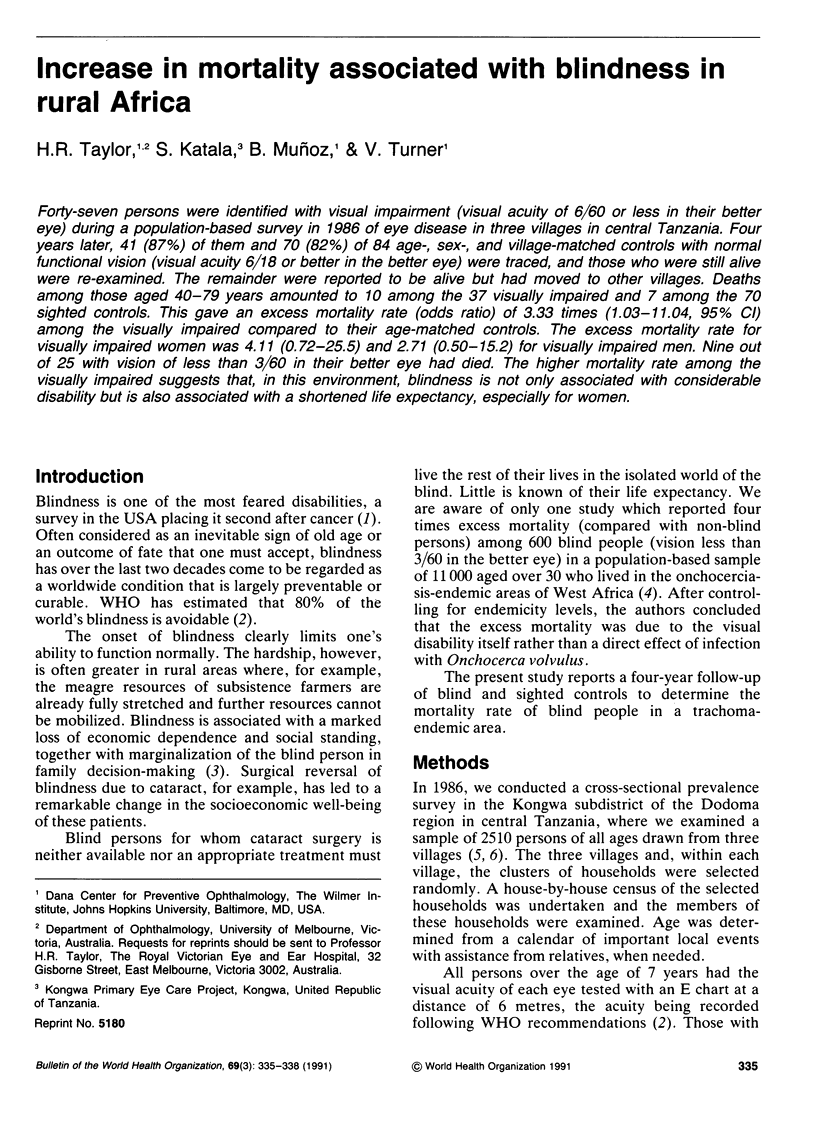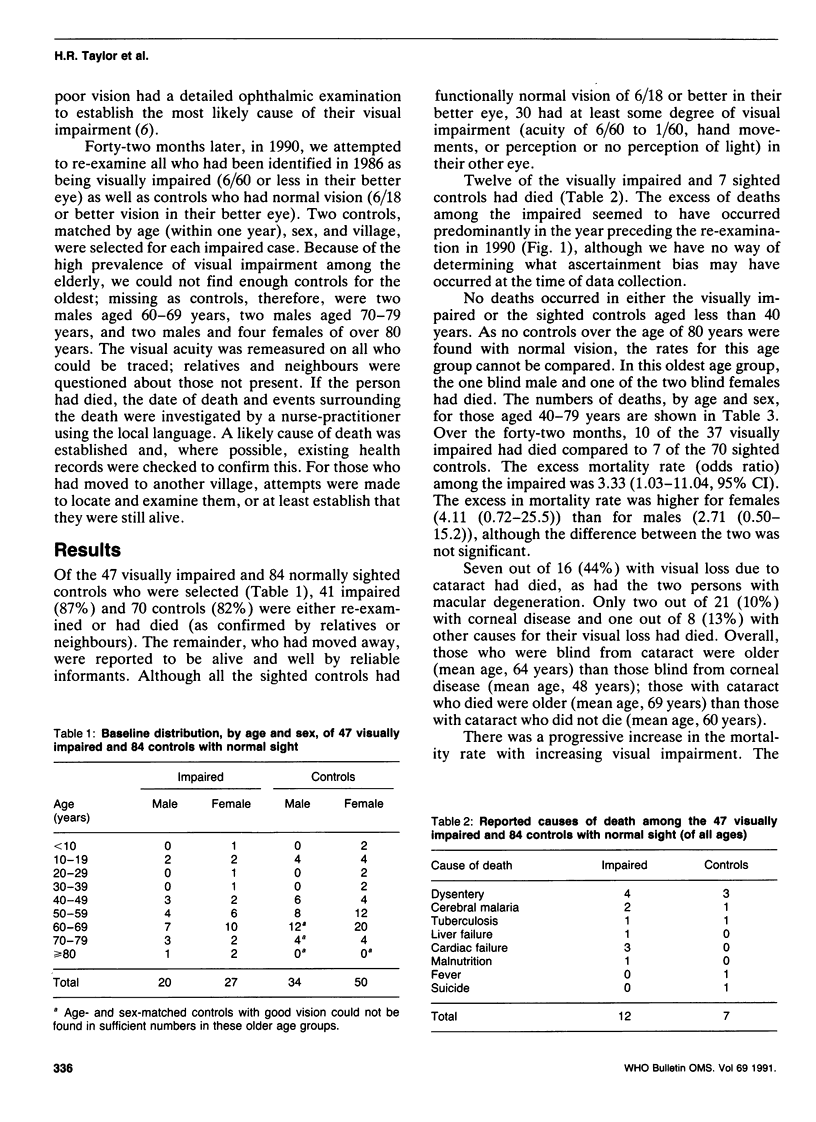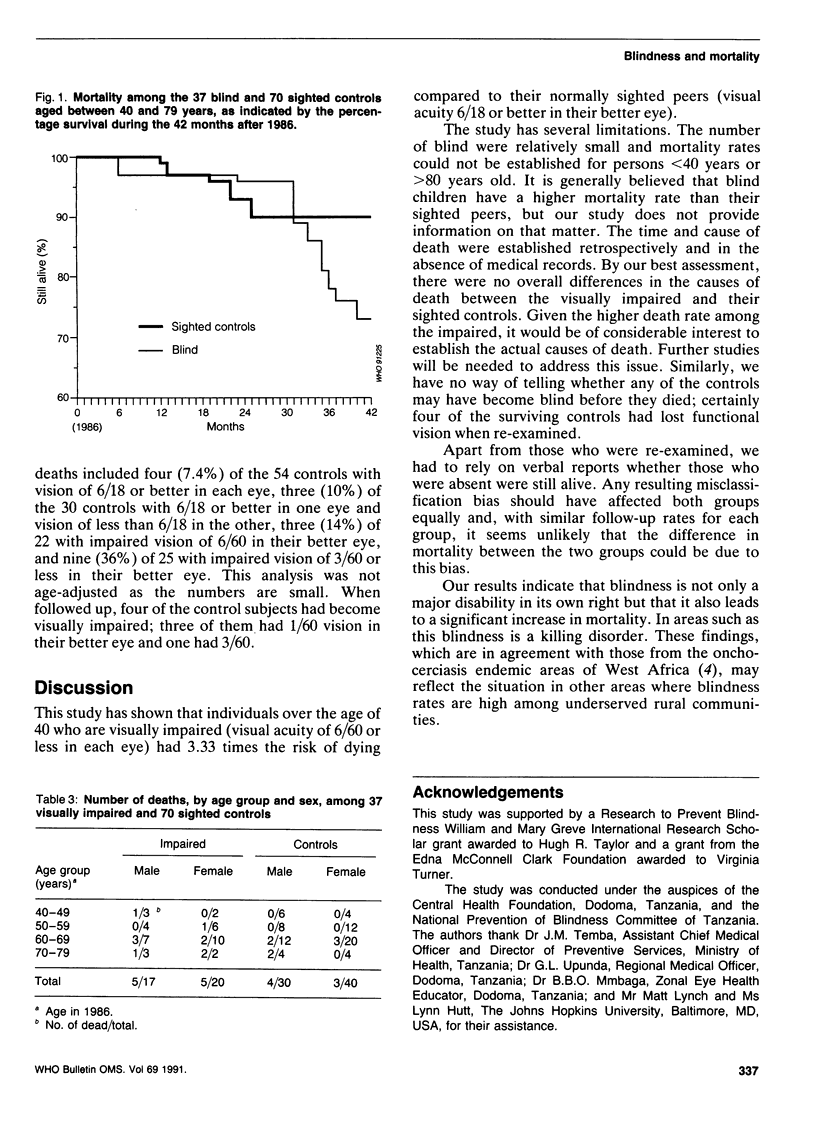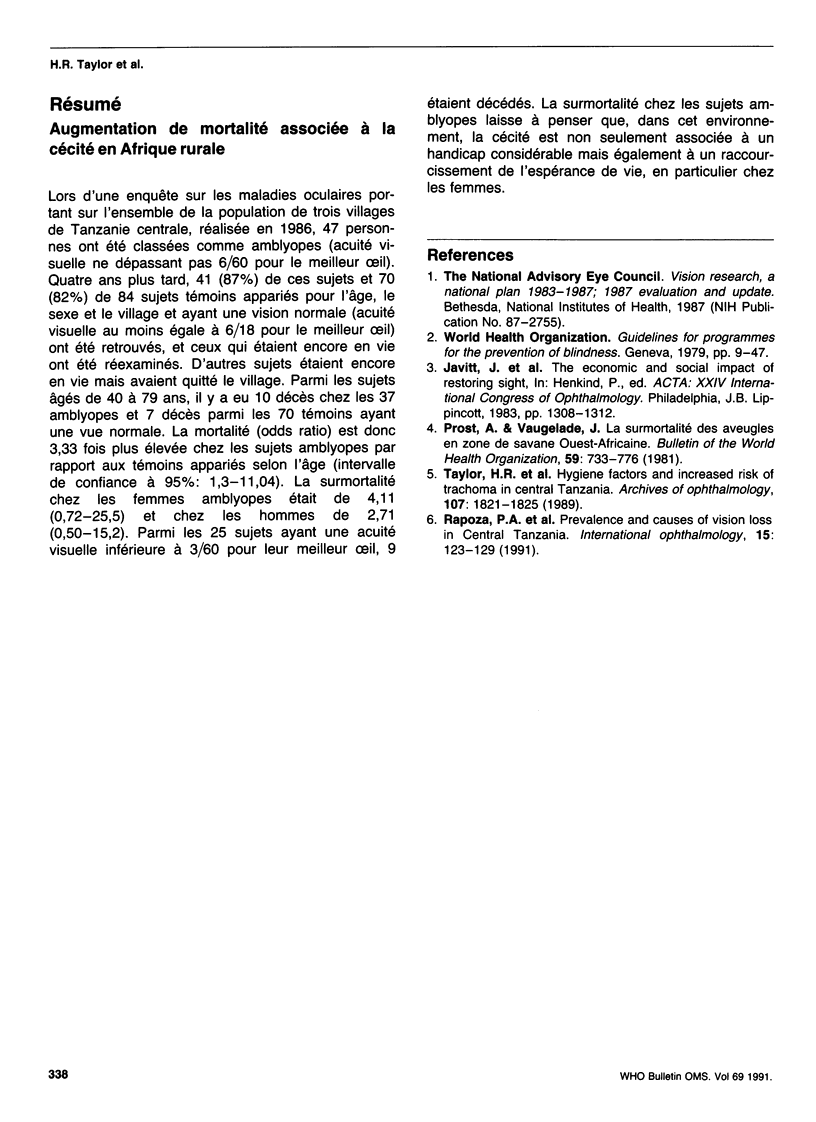Abstract
Forty-seven persons were identified with visual impairment (visual acuity of 6/60 or less in their better eye) during a population-based survey in 1986 of eye disease in three villages in central Tanzania. Four years later, 41 (87%) of them and 70 (82%) of 84 age-, sex-, and village-matched controls with normal functional vision (visual acuity 6/18 or better in the better eye) were traced, and those who were still alive were re-examined. The remainder were reported to be alive but had moved to other villages. Deaths among those aged 40-79 years amounted to 10 among the 37 visually impaired and 7 among the 70 sighted controls. This gave an excess mortality rate (odds ratio) of 3.33 times (1.03-11.04, 95% Cl) among the visually impaired compared to their age-matched controls. The excess mortality rate for visually impaired women was 4.11 (0.72-25.5) and 2.71 (0.50-15.2) for visually impaired men. Nine out of 25 with vision of less than 3/60 in their better eye had died. The higher mortality rate among the visually impaired suggests that, in this environment, blindness is not only associated with considerable disability but is also associated with a shortened life expectancy, especially for women.
Full text
PDF



Selected References
These references are in PubMed. This may not be the complete list of references from this article.
- Prost A., Vaugelade J. La surmortalité des aveugles en zone de savane ouest-africaine. Bull World Health Organ. 1981;59(5):773–776. [PMC free article] [PubMed] [Google Scholar]
- Rapoza P. A., West S. K., Katala S. J., Taylor H. R. Prevalence and causes of vision loss in central Tanzania. Int Ophthalmol. 1991 Mar;15(2):123–129. doi: 10.1007/BF00224465. [DOI] [PubMed] [Google Scholar]


